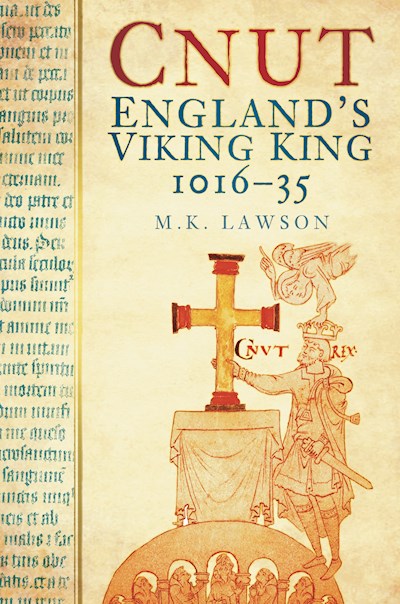
When Michael Kenneth Lawson’s book originally was published in 1993 (as Cnut: The Danes in England in the Early Eleventh Century), it was the first new biography of Cnut since L. M. Larson’s Canute the Great came out in 1912. Because of this, Lawson was able to benefit from the considerable amount of scholarly work on Anglo-Saxon England in the intervening decades on the era, which not only allowed for a more informed interpretation of Cnut’s life but a more Anglo-centric account of his reign as well.
The focus is evident throughout Lawson’s short work. Beginning with Cnut’s re-conquest of England in 1016 he concentrates on describing how Cnut governed England during his nearly two decades as king. This he does in three chapters that explain, successively Cnut’s foreign policy, his relationship with the English church, and the practical operations of his government over the course of his reign. From them emerges a picture of a successful and pious ruler whose achievement was limited by his relatively early death and that of his sons as well.
Lawson makes his arguments convincingly through his mastery of the available sources, and works well within their limits. Yet his book disappoints in two respects. The first is that his account is a little too Anglo-centric. As the ruler of a large part of Scandinavia Cnut was more than just the king of England, and any account of his reign needs to reflect this. While Lawson’s focus may reflect the available evidence, by not addressing the Scandinavian aspects with anywhere near the same degree of thoroughness his examination of Cnut’s monarchy provides a somewhat distorted picture of his subject’s issues and priorities. The other problem is with Lawson’s approach to his material, which is more thematic than chronological. By focusing his chapters on specific aspects of Cnut’s rule, he ends up explaining his reign rather than describing it. While there are advantages to this approach, for my first book on Cnut I was hoping for something with more of a chronological structure that would give me a sense of Cnut’s life as he lived it.
As a result, Lawson’s book works better as a study of Cnut’s governance of England than it does as a biography of him. In this respect it fits the pattern that I’ve come to appreciate about biographies of Anglo-Saxon monarchs, as the limitations of the sources really constrain what authors can do with their subject. In Lawson’s case his choices led him to produce a less well-rounded study of Cnut than he really needs, though his final product helps his readers understand how a Scandinavian king successfully ruled his English realm.

That’s disappointing. Especially if there isn’t much else out there in terms of specialised biography on Cnut.
A round of applause for your blog post. Much thanks again. Really Great!
Thanks! You’re very kind.